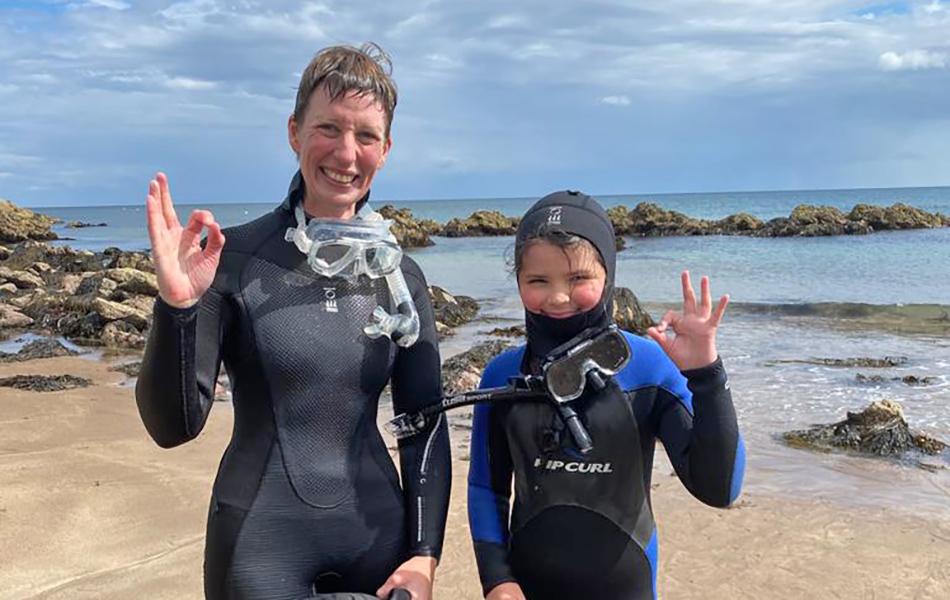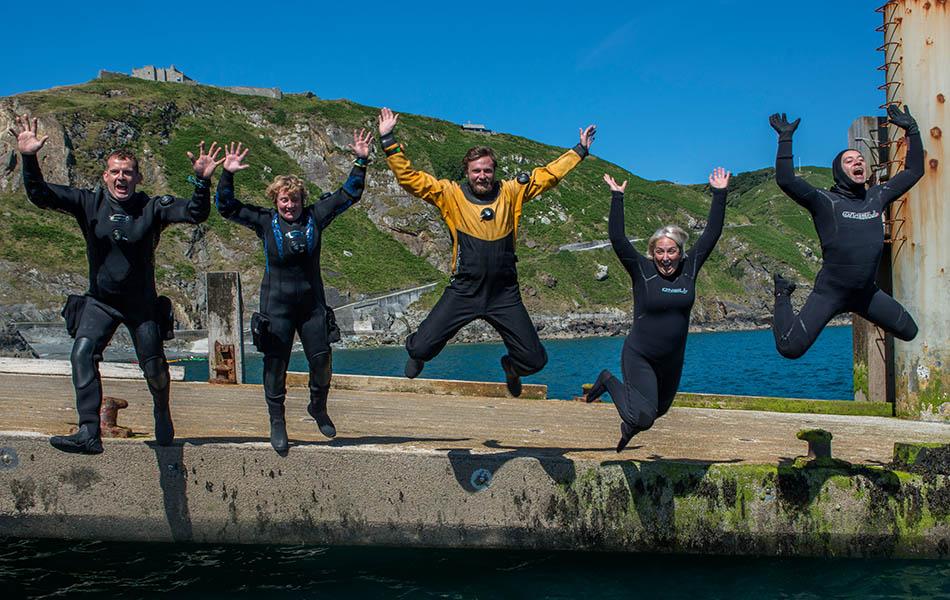
How to get the best and clearest view of the underwater world as a snorkeller or diver.
Many of us have defective eyesight. Although, when looking at something underwater through our masks, everything will appear bigger than it actually is, due to the fact that light bends, or is refracted between water and air trapped in our mask.
This helps us to cope with our defects. Being able to have the clearest view is important, it assistants us to identify and enjoy the creatures, flora and fauna that we encounter, a good thing, and it helps us to avoid things which may do us harm.
- Marg Baldwin, Snorkel Instructor Trainer
Wearing contact lenses or prescription lenses underwater
To ensure the best and clearest view of the underwater world, those who regularly wear glasses or contact lenses are likely to need similar measures underwater.
Contact lenses
Can be worn when using a diving mask, but there is a risk of losing them should a mask flood or be displaced - and the snorkeller needs to open their eyes to recover and refit it. The technique of clearing water from a flooded mask is an essential skill which may require trainees to keep the eyes open while practising it.
Risk of losing the lenses is high. There are also reports of negative reactions from an accumulation of salts between lenses and the eye, which may cause irritation. Most report trouble-free use from those who do regularly wear contact lenses - especially soft lenses - while snorkelling.
However, there is some debate about whether contact lenses should be used whilst snorkelling. It also needs to be considered that you can buy several sets of (disposable) soft contact lenses for the price of a mask with prescription lenses. It might be more economic to carry at least one spare set of contact lenses in your dive bag and bear the risk of occasional losses.
Disposal of any contact lenses after use, especially after flooding, is recommended, as they may have be contaminated with pathogens and other contaminants absorbed into the material of the lens, and they cannot be removed by the eyes natural defences and are likely to cause infection.
Prescription lenses
If the decision is not to use contact lenses, the remaining options are to use a spectacle frame inside the mask, or to have prescription lenses fitted to the mask. It may be possible to remove the side arms from spectacles and fix the remainder of the frame and lenses into a mask with a suitable adhesive, but such an arrangement may be far from optically perfect. Prescription lenses may be best because, like a pair of spectacles, they are custom made.
You can either have lenses made exactly to your prescription (full lenses, reading lenses or bifocals) or have readymade corrective lenses fitted to a mask body. Most manufacturers of diving masks have models designed to accommodate prescription lenses, and also supply the corrective lenses in a range of standard minus dioptres for those who do not require astigmatic correction.
Dive shops can fit these lenses at the point of sale. (Of course, as soon as you remove your diving facemask, you will need to put on glasses or fit contact lenses to recover normal surface vision). Most leading manufacturers of diving equipment include ready-made corrective lenses and masks to accommodate them in their product ranges. Your local dive shop should be able to help you find a suitable mask.
Find your local club and learn to scuba dive or snorkel
Find out more about snorkel training.

 Author: Marg Baldwin | Posted 08 Feb 2018
Author: Marg Baldwin | Posted 08 Feb 2018




